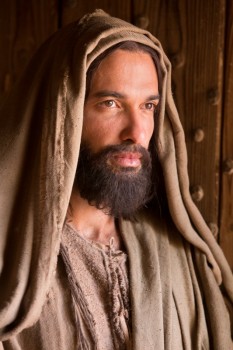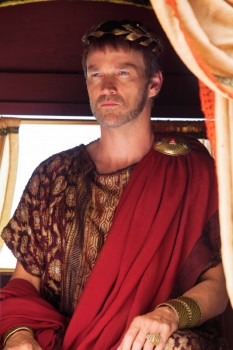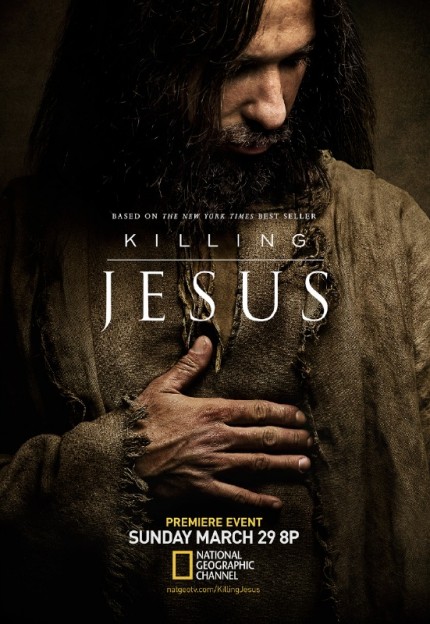‘Killing Jesus’ film highlights politics over deity of Jesus Christ
If one subscribes to the Thomas Jefferson approach to studying Jesus Christ without the miracles, then Killing Jesus will prove to be an entertaining analysis of the man in contrast to a theological exposition.
Adapted from the book by Fox News host Bill O’Reilly and Martin Dugard, writer Walon Green brings the life of Jesus to life by focusing on his role in the geopolitical landscape of his time: Romans versus Jews, the local Roman leadership (Pontious Pilate played by True Blood star Stephen Moyer), the fallout from John the Baptist’s arrest and execution, and the prevailing tensions within the Jewish power structure.

Haaz Sleiman as Jesus of Nazareth in National Geographic Channel’s Killing Jesus. (photo credit: National Geographic Channels/Kent Eanes)
Jesus (Haaz Sleiman) doesn’t perform miracles here (not that they didn’t happen, they are just not portrayed) and sends out a resounding message which uproots nearly every aspects of culture and society. Jewish and Roman leadership are struggling to prevent an uprising, so his execution is rationalized without anyone party carrying more blame over another.
Killing Jesus features great performances, Sleiman gets better as the show progresses and Moyer steals every scene. Shying away from footage seen in Passion of the Christ or Son of God, this tale truly presents the John the Baptist with great attention, puts focus on Nicodemus and Joseph of Arimathea and creates real politcal drama as no party knows what to do with Jesus.
Evangelicals who can appreciate the “historical Jesus” will find benefit from the National Geographic project which spared no expense on constumes, set designs and some effects. Christians looking another retelling of Christ walking on water, raising Lazarus from the dead or being bludgeoned by the Romans – you will be disappointed, and likely frustrated.

Stephen Moyer, as Pontius PIlate, approaching Jerusalem. (photo credit: National Geographic Channels/Kent Eanes)
The 3 1/2 year ministry seems rushed and the story skips over so many Biblical accounts, Sunday School teachers can now fill a year of cover the “stories behind Killing Jesus.”
There are incredible parallels to Selma, the Martin Luther King Jr. biography, as Jesus preaches love and heads a passionate following seeking change, but always pausing just ahead of inciting riots or violence.
Omitting facts and pieces of scripture can lead to false beliefs or incorrect theology, but Nat Geo isn’t preaching as much as they are asking audiences to acknowledge that the unknown Jew from an obscure town of Bethlehem changed the world and whether you believe in the religon or not, that must be documented and discussed.
The film also stars Rufus Sewell as the high priest Caiaphas (but looks like Ian McShane or Christopher Guest at times), Emmanuelle Chriqui as Herodia, ex-wife of Herod II and wife of his brother Antipas, Eoin Macken as Antipas, the tetrarch of Galilee and Perea.
Kelsey Grammer (Herod the Great) and John Rhys-Davis (Annas) are barely onscreen and the remaining cast is adequate, but never given anything “meaty” for an actor to jump out to audiences. More on the cast and details – click here.
Overall Killing Jesus receives 3 out of 5 stars.
Killing Jesus airs Sunday, March 29 on National Geographic at 8pm ET.
Our Dispatch Radio interviews:
















[…] 'Killing Jesus' film highlights politics over deity of Jesus Christ […]
[…] 'Killing Jesus' film highlights politics over deity of Jesus Christ […]